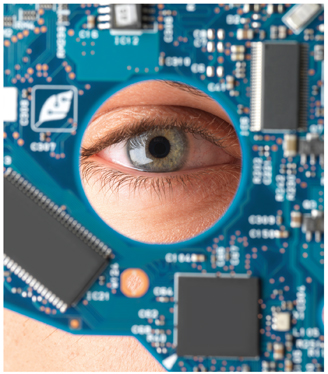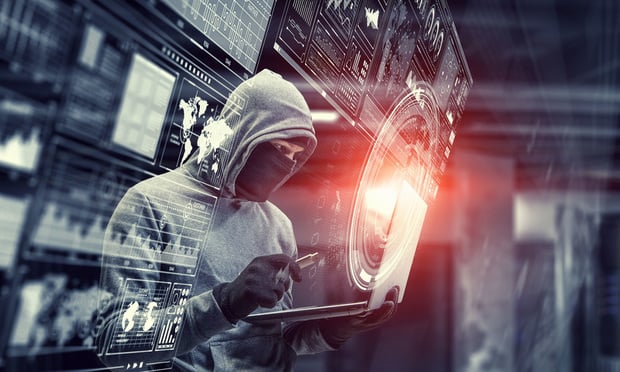 Originally used in the aircraft industry, event data recorders (EDRs), commonly known as "black boxes," are now incorporated in a variety of consumer products, ranging from household appliances and alarm panel systems to cars and copiers. Recording a final data picture just before a product fails, EDRs are tamper-proof with a read/write memory device that unobtrusively captures a variety and wealth of product information that may be useful to an adjuster evaluating subrogation arising from a loss. For example, in appliances, EDRs can be triggered by a power surge or temperature spike, either of which can support an insured's claim that he or she saw the product begin to smoke, catch on fire, or fail to operate properly.
Originally used in the aircraft industry, event data recorders (EDRs), commonly known as "black boxes," are now incorporated in a variety of consumer products, ranging from household appliances and alarm panel systems to cars and copiers. Recording a final data picture just before a product fails, EDRs are tamper-proof with a read/write memory device that unobtrusively captures a variety and wealth of product information that may be useful to an adjuster evaluating subrogation arising from a loss. For example, in appliances, EDRs can be triggered by a power surge or temperature spike, either of which can support an insured's claim that he or she saw the product begin to smoke, catch on fire, or fail to operate properly.
It is easy to compare EDRs to a constant surveillance system that monitors its surroundings, similar to the telescreen in George Orwell's classic novel "1984," which monitored citizens at all times. However, unlike the telescreen and the negative "Big Brother is Watching" connotation, EDRs are positive mechanisms when used appropriately and consistently with state legislative requirements.
The Age of Smart Technology
EDRs and smart technology programs have greatly expanded available data about products and their environments. Some manufacturers provide EDRs that monitor and diagnose appliances off-site, but data collected varies. For example, some EDRs provide operating hours, switch status and attempts to connect outside agencies, such as a fire panel, and so on. These days, smart technology is being used to control appliances, as well as heating and air conditioning systems to save energy and increase safety through the use of meters and controls that take specific measurements at pre-determined intervals. Such controls and metering can acquire, analyze and convert energy data to improve efficiency.
Smart technology provides a significant amount of useful information shortly before and during a failure that can be captured for expert analysis. Recent patent applications issued for household appliances with air dryer devices and heating units include dishwashers, washers, dryers, and stoves, and so on. For instance, Whirlpool Corporation obtained a patent for a stove that included schematics of a control clock accessory for its inventory and recording collector that dealt with links to communicate with multiple appliances. Appliance Data Pub. No. US 2009/0100132A1. The patent also noted that the black box record was constructed so that it could not be destroyed, and could retain data for the appliance in case of a fire or other failure event.
Data can be communicated to a remote service center or a hand-held device, and further, the remote service center can interactively control the appliance via the central collector. Some examples include: a stove with a built-in stirrer remotely controlled and an ingredient dispenser controlled by a wireless device and a sensor that monitors the cook top pan remotely.
Additional household appliances subject to remote monitoring are washing machines, dryers, dishwashers, refrigerators, freezers, toasters, blenders, mixers, food processors, coffee makers, and so on. The user can be notified by his hand-held device with alerts about the products being monitored. For a fee, the appliances can also be monitored by the manufacturer to include failures diagnoses.
The Thought Police
Just like the thought police in "1984," major companies such as LG, General Electric, and Panasonic implement accelerated smart technology in their products. In fact, LG now offers appliances with THINQ Technology which permits "smart" washers and dryers, ovens, stoves, vacuums, dishwashers, and refrigerators to be Wi-Fi controlled, and to include smart metering. This new technology collects critical information about the appliances' performances that needs to be evaluated for subrogation recovery. Further, LG offers a Smart Diagnosis program that allegedly notices when something goes wrong in a home appliance and issues alerts on the product's display panel. This program will soon offer Wi-Fi appliance alerts to consumers.
Panasonic unveiled its own energy smart product line called ECONAVI, which features 30 new appliances, including refrigerators, washers, air conditioners, microwaves, bread makers, rice cookers, and so on. These products were developed to monitor a user's living environment and adjust usage accordingly. They also collect valuable data about the product and its environment, which is an important part of any subrogation investigation involving product losses.

GE also offers a Nucleus Energy Manager, which includes a programmable thermostat, washer, dryer, and dishwasher. The program manager collects real-time information about energy use in the home, providing vital data about the circumstances occurring at or near the time of a loss. These home energy management systems offer different levels of energy monitoring and control over home appliances.
Vehicle EDR Data and Legislative Action
In Arkansas, California, Colorado, Connecticut, Maine, New Hampshire, New York, Nevada, North Dakota, Oregon, Texas, Virginia, and Washington, state laws have been enacted related to EDRs in vehicles. State statutes have been ratified based on consumer complaints about companies obtaining vehicle data without the owner even knowing about it. Warrants have been issued in criminal cases in some states to access vehicle EDR data. The National Highway Traffic Safety Administration (NHTSA) released a mandate on vehicle EDRs (47478-47489), providing a minimum standard for the data that EDRs collect. Fifteen types of vehicle crash data are required by the NHTSA. These include: pre-crash speed, engine throttle, brake use, measured changes in forward velocity, driver safety belt use, air bag warning lamp status, and air bag deployment times.
Courts have been more willing to accept EDR information as a reliable source of empirical data. Recovered empirical data avoids the memory hole of oblivion when such product data is not recovered. Because of the expansion of EDRs into consumer household products other than vehicles, legislative action in states may be necessary to define the scope and access to an appliance's data.
Doublethink
In "1984," the term "doublethink" was euphemistically coined for simultaneously holding and believing contradictory beliefs. What EDR and smart technology may produce is empirical data that would ostensibly undercuts "doublethink" about what happened to a product involved in a failure subject to a subrogation investigation. The Whirlpool patent discussed above noted black box operational data could be used by insurance companies to assess the causes and effects of a destructive event. Physical evidence to include recoverable EDR smart technology data needs to be preserved after a loss event, and the value of that data will not be known until a complete subrogation investigation is completed. Recovered data needs to be properly secured and evaluated with other evidence, witness statements, available video/audio and other details, as part of any subrogation investigation. In addition, data may assist in establishing an area when a loss occurred as well as the cause of a loss.
As Isaac Asimov, an American science fiction author, is quoted as saying "The only constant is continuing change, inevitable change that is a dominant factor in society today." Claims adjusters must keep pace with smart technology advances in property claims relative to subrogation recovery issues, and they must also obtain and preserve available EDR information and smart technology data properly.
Want to continue reading?
Become a Free PropertyCasualty360 Digital Reader
Your access to unlimited PropertyCasualty360 content isn’t changing.
Once you are an ALM digital member, you’ll receive:
- Breaking insurance news and analysis, on-site and via our newsletters and custom alerts
- Weekly Insurance Speak podcast featuring exclusive interviews with industry leaders
- Educational webcasts, white papers, and ebooks from industry thought leaders
- Critical converage of the employee benefits and financial advisory markets on our other ALM sites, BenefitsPRO and ThinkAdvisor
Already have an account? Sign In Now
© 2025 ALM Global, LLC, All Rights Reserved. Request academic re-use from www.copyright.com. All other uses, submit a request to [email protected]. For more information visit Asset & Logo Licensing.








